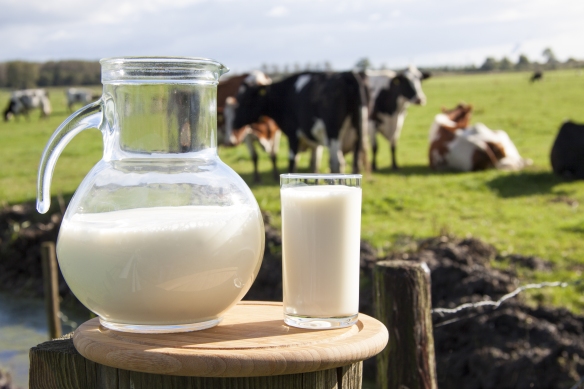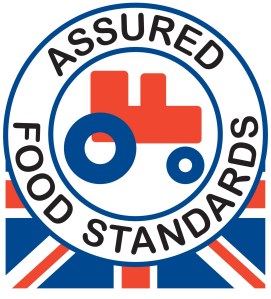As the General Election looms nearer, politicians are still asked the classic question that measures their it-touchness: “how much does a pint of milk cost?”
The answer to that would be “cheaper than ever!” as the price wars between supermarkets rage, in order to keep up with the growing popularity of Aldi and Lidl – seen as the new affordable high street shops.
Naturally, the trend is extremely good for the “pound in your pocket”, with the amount of your average shop coming down, helped along by the slow down of UK inflation. In the past 12 months, milk prices have slumped some 50%, hitting just 22p for a pint in January.
What does this mean, though, for our British farmers?
In Scotland the drop is even worse, with the number halving from 2,000 in 1998, to just under 1,000 today. In 1903, Scotland had 5,735 dairy herds with 223,666 cows and a herd size of 39, while today’s 993 herds and 163,637 cows run at an average herd size of 165.
Furthermore, with such a measly price for milk in the supermarkets, farmers stand to lose almost £70,000 every year in some cases, and many are deciding that the cost is just not worth it anymore.
It’s not just the price of milk that is suffering. Except for Mackies ice-cream – a world renowned brand – Scottish and British dairy products are taking a hit. Indeed, half of the cheese we consume is actually imported, despite the vast amounts produced here in Scotland.
Despite the year on year drop in milk prices, the actual margin awarded to the supermarkets is up 13p since 1996.
Jim Paice, the Farming Minister, said a “voluntary code” is required, to encourage stores and farmers to set a reasonable price, without government intervention.
Paice said: “One retailer is openly selling milk at 99p for four pints. The reality is that such a price is completely unsustainable.
“Such retailers need to understand that if they go on like that, there will be no milk. There is a limit to cost-cutting…It is completely impossible.”
Dairy is an essential part of our health. The average 8-ounce serving of dairy milk has 300 milligrams of calcium in it – around 33% of your recommended allowance. Compare that with soy milk (50 milligrams), almond milk (2 milligrams), and rice milk (1 milligram), and we find dairy is far superior.
Despite this, dairy-alternative products are making big money. Of course, allergies are unavoidable, but those who think they are “healthier” should wake up and smell the coffee. Dairy milk (semi-skimmed and whole) even has some fat-burning properties, and is packed with protein and good saturated fats.
Taking in sufficient amounts of calcium is crucial early in life, as key bone-building years are in our mid-20s, and then tapers off as we age. For young women especially, calcium is vital due to pregnancy, and the amount of calcium lost during the menopause.
Surprisingly, the amount of milk we are actually buying rose by 2.8% in 2014, which is down to people buying more milk as well as a growing population.
Meanwhile, China’s appetite for dairy has fallen, and with Russia’s imports embargo, the future of dairy is being skimmed alive.
So, what can we do?
Firstly, the duplicitous tactic of supermarkets labelling foreign, imported milk as “produced in Scotland” must end immediately. British milk should be championed, and advertised throughout stores; encouraging shoppers to buy locally sourced dairy products, keeping the farming economy buoyant.
Secondly, take time to look for the little red tractor on your items, or that the products you are buying are sourced from the UK, and the farmers have got a fair price.
The Red Tractor association lets you know that your items are traceable, have met industry standards for quality and farming, and the Union Jack lets you know your money is going to British farmers.
Some supermarkets – such as Marks & Spencer, Waitrose, and Sainsbury’s – note that they have done this themselves, so might not have the Red Tractor logo on their items.
If this is done, then our farmers will start to see the benefits from their labour. The vast majority of consumers support a 5p increase in the price of milk if it goes towards local farmers.
Not only for the producers, but the health of the dairy industry keeps our beloved landscape vibrant. Imagine “zero-grazing” units around the country, where, instead of cows grazing in lush fields, they are kept in industrial houses, keeping costs rock bottom.
This is a disgrace for our countryside, but also for the wellbeing of the livestock. Already in England there have been planning permission requests to build an 8,000 capacity warehouse for just that purpose.
I have never felt terribly strongly about a particular charity or campaign, but dairy is a crucial part of my lifestyle, and farming is the lifeblood of the British economy. For millennia it has been part of our lives, and to see it fall into a robotic-like industry is heartbreaking.
Stop skimming milk alive, and give dairy farmers the gold top.


[…] apparent to me is the sour deal that dairy farmers are getting in Scotland. As I wrote in a previous blog, Scottish dairy farmers are in significant decline: creamed by cheap foreign imports; losing out to […]
LikeLike
[…] the state of dairy farming at the moment does create pause for thought when one considers 40% of the EU’s budget is […]
LikeLike